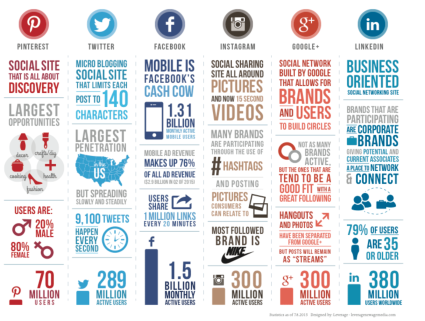
(Leverage,2015)
Introduction
There is a clear disparity between our online and real-world identities where we represent different characteristics on the internet compared to the physical world (Internet Society, 2016). Our online identity reflects our characteristics and any form of interaction on the internet. This ranges from allowing individuals to keep their professional lives separate from their work lives, to people manipulating their true persona to become an identify thief.
Even one who may be classified as a digital visitor will have ‘multiple online identities’ through third party websites collecting identifiers.
According to Costa and Torres, (2011) the matter of digital identity is based around ‘two macro areas: presentation and reputation.’ I would have to agree that these two fields are central to the advantages and disadvantages around having multiple online identities.
Reference : https://saberhamidi.wordpress.com/2015/02/22/topic-2-should-we-have-more-than-one-online-identity/
Advantages and Disadvantages
Click Below
https://www.haikudeck.com/multiple-online-identities-education-presentation-y8XXLox0g7
(Manton, 2015)
Having more than one online identity and several social media accounts has given us the opportunity to manage and express different aspects of our personas. (Lee, 16) A single unfortunate post on social media such as on Facebook could jeopardize a career, especially with 40 to 60 percent of hiring managers using social media to screen potential hires (Ollier-Malaterre, Rothbard, 2015). This statistic is significantly high and therefore would urge people to form a separate online social identity as around 40% of employees would find obliged to accept a professional contact ‘friend request’ (Ollier-Malaterre, Rothbard, 2015). Even though there are safeguard options to prevent what groups of people can see, this is simply creating two separate identities for two categories of people, in order to present them self in a reputable manor.
On the other hand, the idea of having several online identities reminds me of the MTV programme Catfish. This is the ability for people to manipulate their information to be perceived as someone they are not. This itself has several issues such as being perceived as untrustworthy to the extremity of stalking and predatory behaviour.
(Max Joseph, 2012)
Conclusion
Marc Zuckerberg, the founder of Facebook, believes that identity is authenticity; ‘that you are online who you are offline’ (Krotoski, 2012). I believe that having more than one online identity is not acceptable, but one can have multiple online persona’s in order to present themselves in different situations to maintain their reputation as a professional through LinkedIn or as the bubbly joker through Facebook.
Take control of your own Online Identity:
(Diaz, 2010)
References
Leverage (2015), Social Infographic, http://conversion-hub.com/wp-content/uploads/2016/06/01-social-infographics.png, Last accessed 30th/10/16.
Aleks Krotoski. (2012). Online identity: is authenticity or anonymity more important?. Available: https://www.theguardian.com/technology/2012/apr/19/online-identity-authenticity-anonymity. Last accessed 30th/10/16.
Cristina Costa, Ricardo Torres. (2011). To be or not to be, the importance of Digital Identity in the networked society. Available: http://eft.educom.pt/index.php/eft/article/view/216/126. Last accessed 30/10/16.
Nicole Lee. (2016). Having multiple online identities is more normal than you think. Available: https://www.engadget.com/2016/03/04/multiple-online-identities/. Last accessed 30th/10/16.
Tamara Manton. (2015). Pros and Cons – Multiple Identities. Available: https://www.haikudeck.com/multiple-online-identities-education-presentation-y8XXLox0g7. Last accessed 30/10/16.
Ariane Ollier-MalaterreNancy Rothbard. (2015). How to Separate the Personal and Professional on Social Media. Available: https://hbr.org/2015/03/how-to-separate-the-personal-and-professional-on-social-media. Last accessed 30th/10/16.
Toral Cowiest and company. (2016). Privacy & Identity. Available: http://www.internetsociety.org/what-we-do/internet-technology-matters/privacy-identity. Last accessed 30th/10/16.
Max Joseph. (2012). CATFISH: THE TV SHOW TRAILER. Available: https://www.youtube.com/watch?v=CMA4x7aXJT0. Last accessed 30/10/2016.
Zadi Diaz. (2010). 7 Steps To Building Your Online Identity. Available: https://www.youtube.com/watch?v=2UlcOX1fZW4&feature=youtu.be. Last accessed 30th/10/16.

 (Figure 1)
(Figure 1)